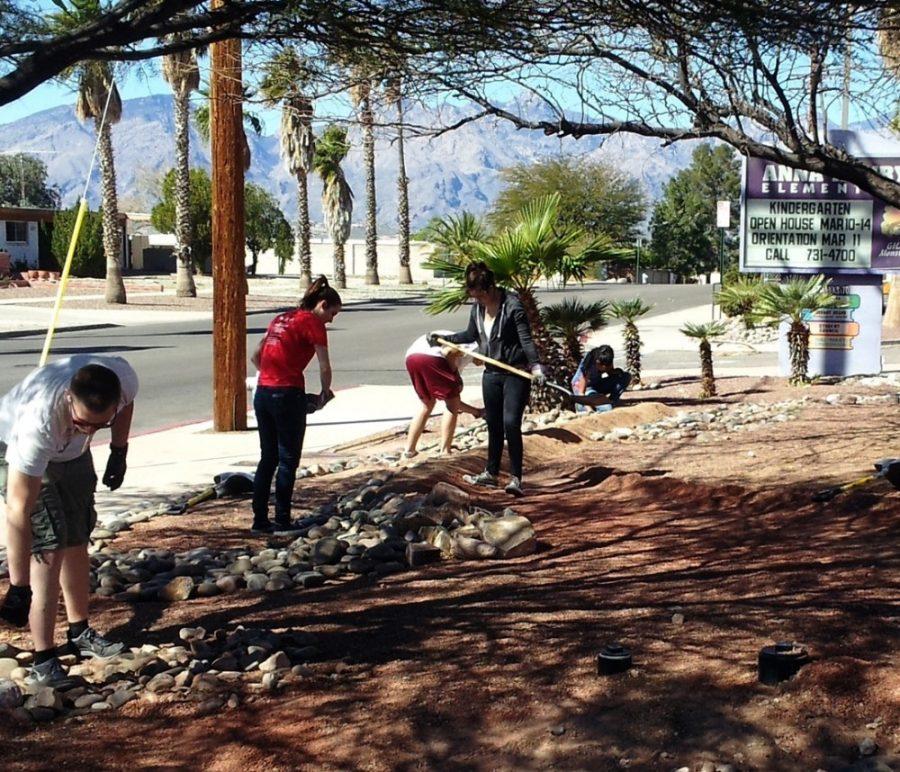Tucsonans have the potential to save as much as 250 million gallons of water annually, which can in turn generate up to $500,000 for local community ecosystem restoration projects.
This is possible through a unique program called Conserve to Enhance, from the University of Arizona Water Resource Research Center.
“C2E is a voluntary water conservation program,” said Brittany Xiu, the WRRC Water Research and Planning Innovations for Dryland Systems outreach coordinator. “We encourage homes and businesses to conserve water either through behavioral changes or technology modifications.”
The WRRC found that many people often question why they should conserve their water, explained Kelly Mott Lacroix, a research analyst in the WRRC Water RAPIDS program and a doctoral candidate in arid land resource sciences.
The program links water conservation with a mechanism to generate a fund that could then be used for other projects to help better enhance the environment, Lacroix said.
The C2E program allows participants to see their water habits through an online dashboard, Xiu said. This online system will make donation suggestions each month based on the amount of money participants saved through reduction of their water usage. These donations are then used for C2E project sites for various environmental restoration and enhancement projects.
Anna Henry Elementary School is one of the C2E project sites and received over $8,000 from the Tucson C2E grant program in 2013, according to B.J. Cordova, a Henry Elementary parent volunteer and project site grant coordinator. Over the past year, the project site has focused on improving the urban wash that borders much of the school by removing trash, preventing soil erosion and replacing invasive plant species with native plants, among other enhancements.
“The motivation behind this project was to make Henry Elementary a showcase for not only education programs, but also environmental stewardship,” Cordova said. “We want to integrate improving the school with an environmental focus.”
C2E has made additional impacts in many communities with C2E grants, such as the Mountain Avenue and First Avenue neighborhood’s Mitchell Park, according to the C2E website. This site has focused on increasing native vegetation to invite wildlife into the urban environment.
“It is a tool in the toolbox of water conservation,” Lacroix said. “It is another way communities can think about to encourage water conservation in a neater way than your low flow toilets, and it is certainly more appealing than tiered water rate structure.”
In addition to affecting water policy in Arizona, C2E has the potential to change water policy in many communities across the country, Xiu said. Currently, C2E impacts Tucson communities and regions connected to the Colorado River Delta. The program is spreading in Arizona and may spread to California and Colorado.
As C2E grows, more communities could see if this program can suit their water conservation needs, Lacroix said.
This program is the first of its kind to not only ask individuals to conserve water, but to use the money saved to benefit their community and local environment.
“No other program makes the water conservation to environmental [enhancement] connection,” Xiu said.
Follow John McMullen @DailyWildcat









